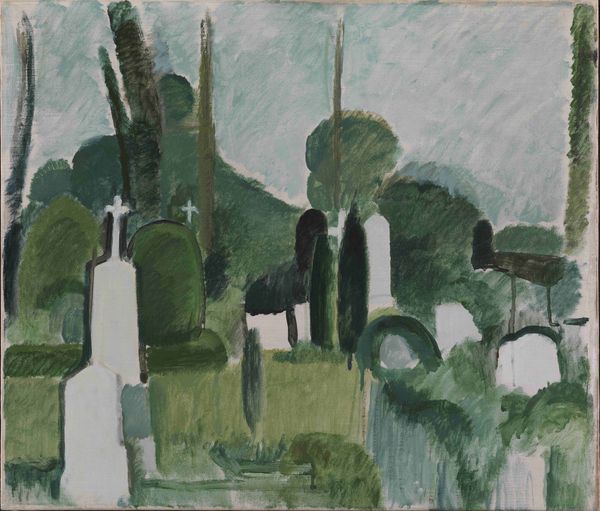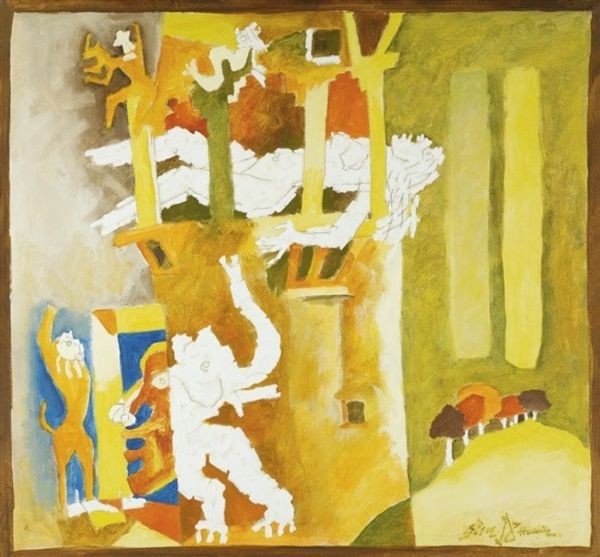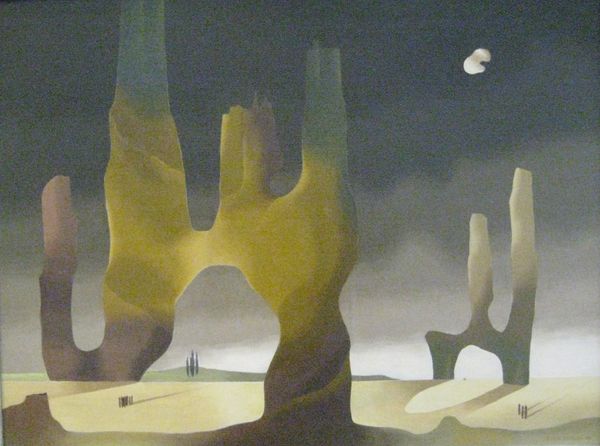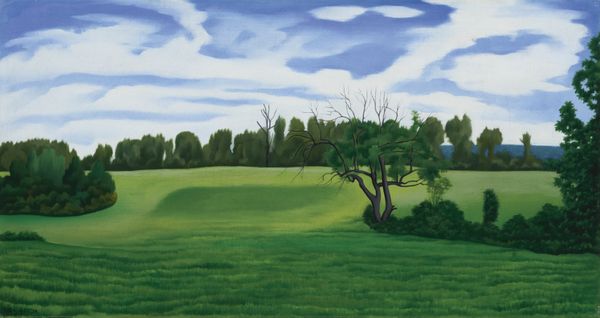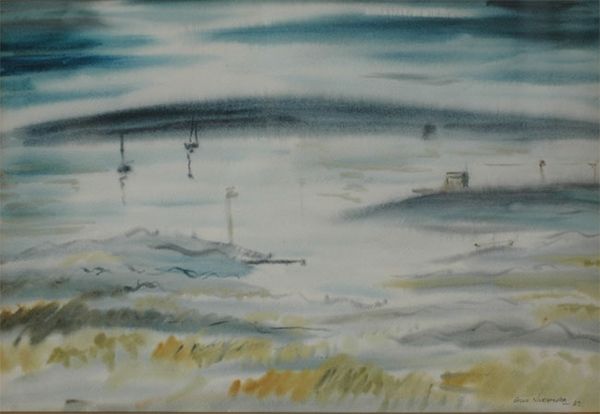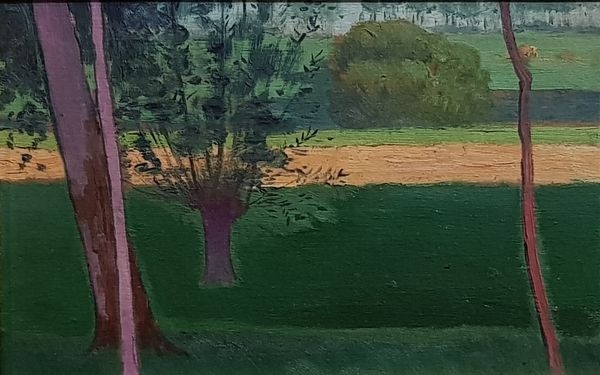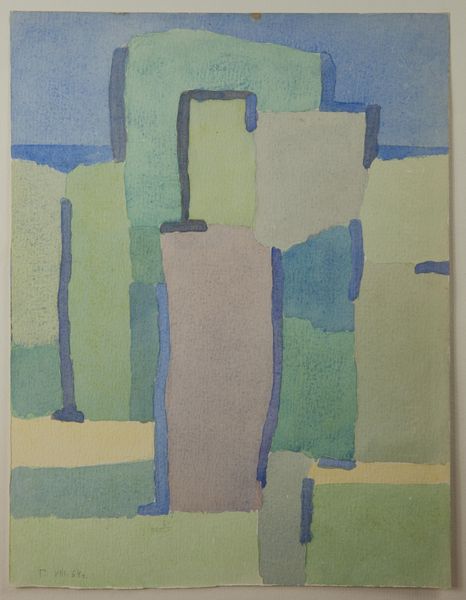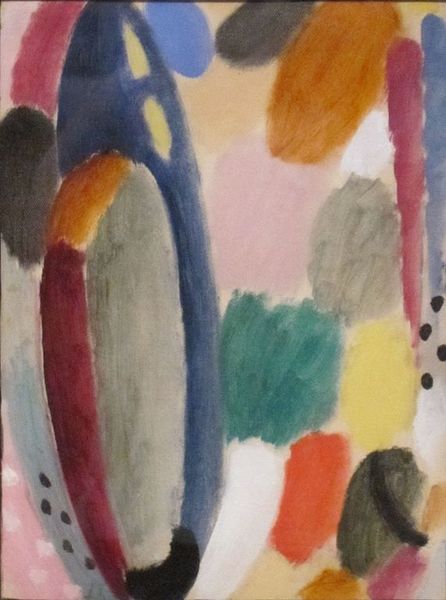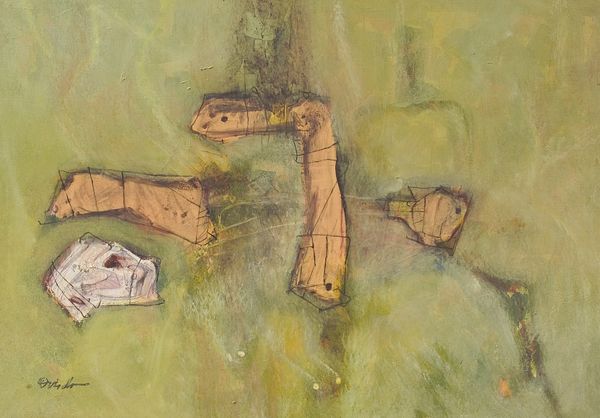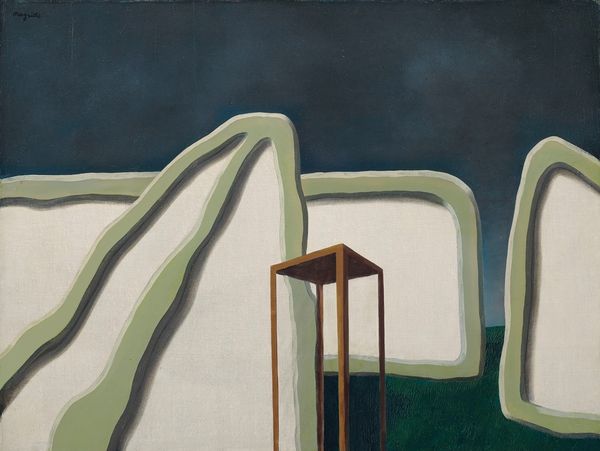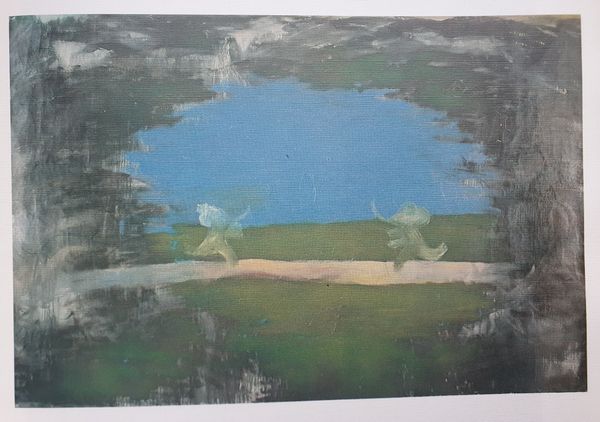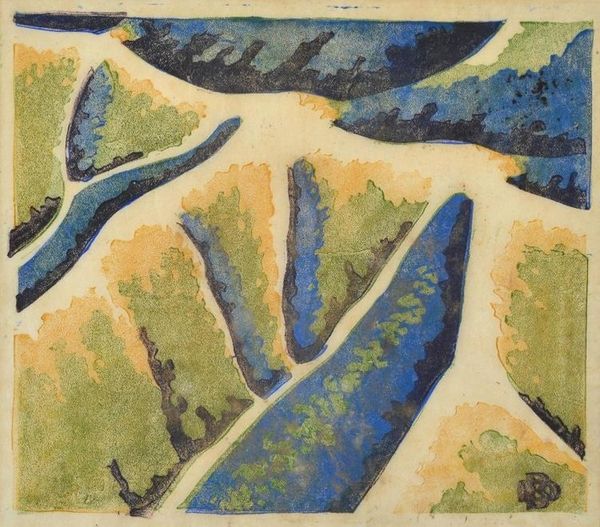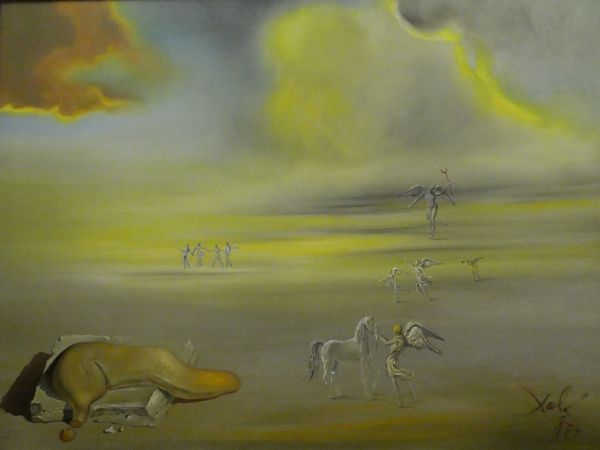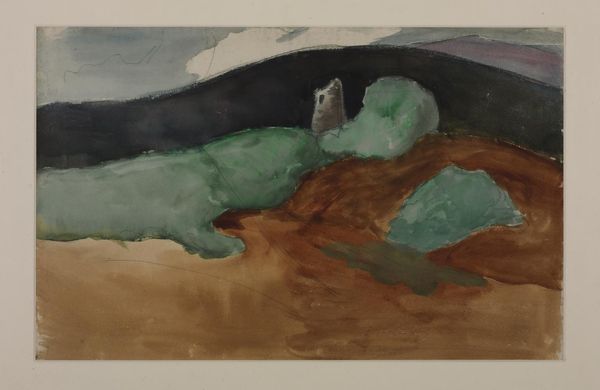
painting, oil-paint
#
painting
#
oil-paint
#
landscape
#
oil painting
#
geometric
#
modernism
Copyright: Oleg Holosiy,Fair Use
Editor: Let’s turn our attention to "Landscape," an oil painting from 1987 by Oleg Holosiy. There’s something stark about the geometry of the utility poles against this pale sky. What stories does this canvas tell, in your view? Curator: Well, Holosiy was part of the Ukrainian New Wave, emerging in the late Soviet period. This aesthetic feels intentional; it suggests a critical stance toward Soviet-era modernization. Note the regimented geometric shapes contrasted with the implied, perhaps disrupted, natural landscape. Editor: Disrupted, how so? Curator: These aren't rolling hills; there’s a deliberate flattening, almost a parody of landscape painting. Given the political context, one can read these utilitarian structures as symbols of imposed, impersonal power, a kind of visual critique of Soviet infrastructure projects that often disregarded ecological concerns and local communities. Does that resonate with you at all? Editor: Definitely, I see that now. It's not just a landscape; it's a commentary. The electric poles seem almost alien. Curator: Precisely! Holosiy and his peers were engaging in a subtle form of dissent. By distorting the familiar, they were provoking questions about the social and political realities of their time. The medium, oil on canvas, is in dialogue with traditions, but there is an undeniably "new" aesthetic in this work. Editor: So it's not just a landscape; it is a visual statement about power and place. I'm leaving with a different outlook on Soviet landscapes in general now. Curator: That is the transformative power of art, isn't it? The more one studies art history, the better one becomes at understanding that art holds up a mirror to both its patrons and creators.
Comments
No comments
Be the first to comment and join the conversation on the ultimate creative platform.
